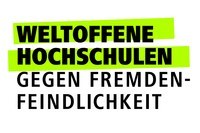Muscle-tendon interaction and adaptation
Tendons are an integral part of muscle-tendon units, and their primary function is to transmit muscle forces to the skeletal system to produce motion. Their elastic properties enable them to deform and efficiently recoil stored strain energy during muscle contractions, while their viscous components control the storage and release of strain energy at required rates. Increased tendon strain during muscle contractions triggers a higher mechanical demand, which may cause tendon injuries. An imbalance between muscle strength and tendon resistance to deform (i.e., tendon stiffness) can compromise the muscle-tendon unit integrity. Accordingly, tendon strain has been proposed as a valid mechanical marker to identify the accumulated microdamage at the tendon resulting from overuse, mainly among athletes. Identifying mechano-metabolic risk factors that increase tendon strain and affect tendon homeostasis is crucial to preventing muscle-tendon-related injuries in sports.
In this research theme, we aimed to study the temporal dynamics of muscle and tendon adaptations to various loading conditions and mechano-metabolic stimuli in healthy and pathological conditions. On a macro level, we investigate the effects of pathological and exercise-related muscle-tendon alterations on locomotion and neuromuscular function during sports and daily life activities such as walking and running. Furthermore, we are dedicated to developing novel and accurate methods to investigate tendon strain and stress, whether in controlled laboratory settings or daily life applications and sports, through wearable technologies aimed to bring insights into individual performance enhancements and decrease the risk of musculoskeletal injuries.
In MoveEx, we focus on developing and establishing non-invasive methods essential for the application in elite and recreational athletes and elderly population. Our non-invasive diagnostics use a combination of dynamometry, ultrasonography, electromyography, and magnetic resonance imaging systems to assess the morphological, mechanical, and material properties of the muscle-tendon units in vivo. The integration of the mobile muscle-tendon laboratory system (TEMULAB; PROTENDON | EXCELLENCE IN BIOMEDICAL SOLUTIONS | AACHEN) allows MoveEx further to assess muscle and tendon properties in real-time and remotely outside of laboratory settings on a regular basis, which is essential for clinical application, monitoring milestones in rehabilitation progress, and for the early diagnosis of microdamage accumulation in the muscle-tendon unit in athletes.
TEMULAB muscle-tendon laboratory system created by Kiros Karamanidis
Cooperation with Bristol City and London South Bank University
Publications (selected):
Lambrianides, Y., Epro, G., Arampatzis, A., & Karamanidis, K. (2024). Evidence of different sensitivity of muscle and tendon to mechano‐metabolic stimuli. Scandinavian Journal of Medicine & Science in Sports, 34(5), e14638.
Kharazi, M., Bohm, S., Theodorakis, C., Mersmann, F., & Arampatzis, A. (2021). Quantifying mechanical loading and elastic strain energy of the human Achilles tendon during walking and running. Scientific Reports, 11(1), 5830.
Epro, G., Suhr, F., & Karamanidis, K. (2023). Human muscle–tendon unit mechanobiological responses to consecutive high strain cyclic loading. Journal of Experimental Biology, 226(20).
Lambrianides, Y., Epro, G., Smith, K., Mileva, K. N., James, D., & Karamanidis, K. (2022). Impact of Different Mechanical and Metabolic Stimuli on the Temporal Dynamics of Muscle Strength Adaptation. Journal of Strength and Conditioning Research, 36(11), 3246–3255.
Mersmann, F., Bohm, S., Arampatzis, A., Karamanidis, K., & Seynnes, O. (2021). Muscle and Tendon Plasticity and Interaction in Physiological and Pathological Conditions. Frontiers in Physiology, 12:507
Epro, G., König, M., James, D., Lambrianides, Y., Werth, J., Hunter, S., & Karamanidis, K. (2021). Evidence that ageing does not influence the uniformity of the muscle–tendon unit adaptation in master sprinters. Journal of Biomechanics, 120:110364
Karamanidis, K., & Epro, G. (2020). Monitoring muscle-tendon adaptation over several years of athletic training and competition in elite track and field jumpers. Frontiers in Physiology, 11
Karamanidis K., Epro G., König M., Mersmann F. & Arampatzis A. (2019). Simplified Triceps Surae Muscle Volume Assessment in Older Adults. Frontiers in Physiology, 10:1299
Epro G., Hunter S., König M., Schade F. & Karamanidis K. (2019). Evidence of a Uniform Muscle-Tendon Unit Adaptation in Healthy Elite Track and Field Jumpers: A Cross Sectional Investigation. Frontiers in Physiology, 10:574
McCrum C., Leow P., Epro G., König M., Meijer K. & Karamanidis K. (2018). Alterations in leg extensor muscle-tendon unit biomechanical properties with ageing and mechanical loading. Frontiers in Physiology, 9:150
Epro G., McCrum C., Mierau A., Leyendecker M., Brüggemann G.-P. & Karamanidis K. (2018). Effects of triceps surae muscle strength and tendon stiffness on the reactive dynamic stability and adaptability of older female adults during perturbed walking. Journal of Applied Physiology, 124;6:1541-1549
Epro G., Mierau A., Doerner J., Luetkens J.A., Scheef L., Kukuk G.M., Boecker H, Maganaris C.N., Brüggemann G-P. & Karamanidis K. (2017). Achilles tendon is mechanosensitive in older adults: Adaptations following 14 weeks versus 1.5 year of cyclic strain exercise. Journal of Experimental Biology, 220:1008-1018
Ackermans T.M.A., Epro G., McCrum C., Oberländer K.D., Suhr F., Drost M.R., Meijer K. & Karamanidis K. (2016). Aging and the effects of a half marathon on Achilles tendon length-tension properties. European Journal of Applied Physiology, 116;11-12:2281–2292
Manfredini B.B., Geremia J.M., Rodrigues R., Franke R. de A., Karamanidis K. & Aurélio Vaz M. (2013). Muscle architecture adaptations to knee extensor eccentric training: Rectus femoris vs. Vastus lateralis. Muscle & Nerve, 48;4:498-506
Karamanidis K. & Arampatzis A (2005). Mechanical and morphological properties of different muscle-tendon units in the lower extremity and running mechanics: effect of aging and physical activity. Journal of Experimental Biology, 208;20:3907-3923






